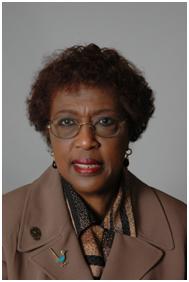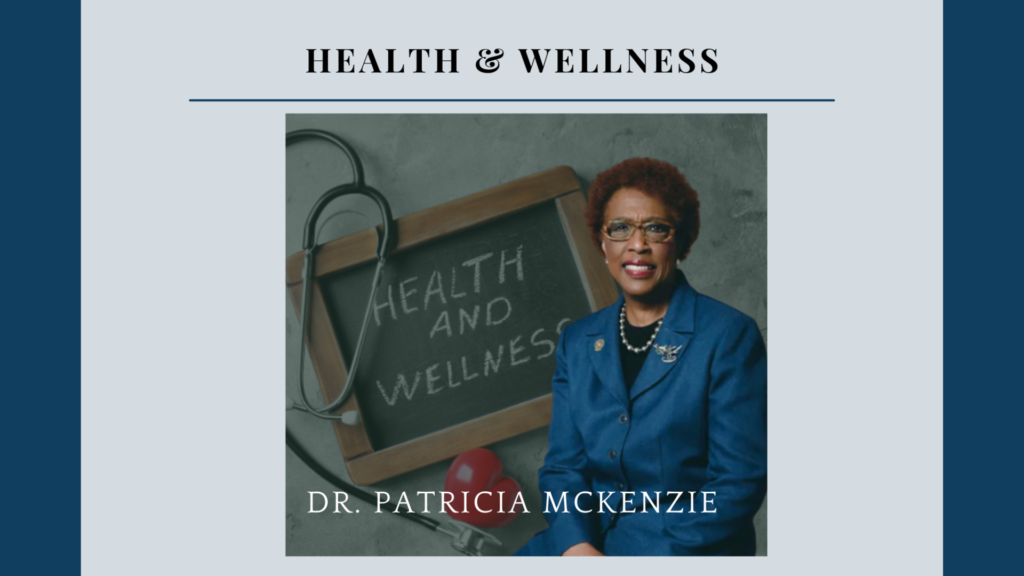EIGHTH EPISCOPAL DISTRICT
HEALTH MINISTRY (VOL 3)

Dr. Patricia D. McKenzie
Episcopal Coordinator for Health Ministries
Social Share
PART I.
NATIONAL HEALTH OBSERVANCES FOR MARCH
A. COLORECTAL CANCER AWARENESS MONTH
Source: Colorectal Cancer Alliance. www.colorectalcancer.org/
FACTS:
“ Colorectal cancer (CRC) is the fourth most commonly diagnosed cancer in the U.S. among men and women combined and the second leading cause of cancer deaths. It is estimated that 152,810 people will be diagnosed with CRC in 2024 and 53,010 will die from the disease. But there are more than 1.5 million survivors in the U.S. In the U.S. about 10% of the cases are diagnosed in people under 50. These numbers are rising. It is currently the deadliest cancer among young women. Black American have the second highest mortality and incidence rates in the U.S. They are 35% more likely to die from CRC and 15% more likely to develop it than non-Hispanic whites.
This cancer can be prevented with screening and is highly treatable when detected early. When detected early, CRC has a 90% survival rate.
Common symptoms include-
1. Rectal bleeding, blood on stool can be bright red or the stool may be black and tarry or brick red
2. Changing bowel habits may include intermittent or constant diarrhea and/or constipation
3. Persistent abdominal discomfort may present as cramps, gas or pain; can feel bloated or like your bowel is not completely empty
4. Nausea and vomiting can also occur
5. Unexplained weight loss.
However, it can also develop without symptoms. Colon cancer and rectal cancer may present some of the same symptoms and the difference is where the cancer originates. Whenever these symptoms are noted, see your dr. immediately. There are stages of this cancer and your Dr. determine that and decide on the appropriate treatment.
Early diagnosis can prevent it from spreading to other organs. For example, colon cancer can spread to the lungs and liver. The rectal cancer can spread to the liver, lungs and ovaries.
Screening is the #1 way to prevent colon cancer and rectal cancer. The American Cancer Society recommends-1.to begin at age 45 2. If family history, begin before 45. Screening methods will be discussed with your Dr. These include the colonoscopy (considered the most effective) and home screening kit. The goal is to identify the best screening option for you.
Health equity is important is important because there is a stigma about colorectal cancer. The Colorectal Cancer Alliance developed a program called “Lead From Behind” and Dak Prescott is involved.”
B. NATIONAL KIDNEY MONTH
Source: National Kidney Foundation. www.kidney.org/
FACTS:
“1 IN 3 American adults is at risk for kidney disease; 37 million have kidney disease; and most don’t know it; 100,000 people are on the kidney transplant list.
Dialysis is needed when the kidneys no longer remove enough wastes and fluid from the blood to keep the person healthy. This usually happens when there is only 10-15% of the kidney function left. The person may notice symptoms such as nausea, vomiting, swelling and fatigue. Dialysis may be needed for a short time if the diagnosis is acute kidney failure. However, with the diagnosis of chronic kidney disease, it is needed for the rest of the person’s life without a kidney transplant.
The Dr. will discuss the various treatment approaches (Hemodialysis or Peritoneal Dialysis) and the approach selected will depend on the person’s needs, medical condition, life and work schedule. Some patients continue to work full-time, others switch to part-time or a flexible schedule. Some request jobs that are less physically demanding. An employer needs information about illness, abilities and any physical limitations if any.
Rehabilitation to return to work:
1.Plan for a healthier physical state
2. Positive outlook, enjoying relationships with family and friends
3. Regular exercise considered, must talk to the Dr. before starting any exercise program
4. Expect to be monitored to control blood pressure, to manage weight recommended, to follow the diet prescribed.
There are laws to protect against job discrimination.
Resources: There are free brochures from the National Kidney Foundation (NKF): Call the Cares Patient Helpline at 855-653-2273; email nkfcares.@kidney.org. Examples of brochures: “Coping Effectively: A Guide for Patients and Their Families,” Getting Ready for a “New Normal: A Helpful Guide for Starting Dialysis.”
C. CELEBRATE YOUR SLEEP HEALTH: SLEEP AWARENESS WEEK-March 10-16.
Source: National Sleep Foundation. www.sf.org/
FACTS:
“The Theme-‘It’s Time to be Your Best Slept Self.’ What is Microsleep? It occurs when you fall asleep for a period of several seconds. It can occur at any time of day, not just at night. During an episode, the person may appear to be awake, and even have their eyes open, but the brain does not process information. If the person is sleep deprived or have a sleep disorder, there is a higher risk for microsleep. It can lead to dangerous crashes and even running off the road. Don’t drive-if you feel drowsy, if you have wandering thoughts, drifting into other lanes or cannot remember the last few minutes. Pull over and rest or ask someone else to drive. To prevent microsleep, the recommendation is 7-9 hours a night for adults and more for teenagers. The following techniques are recommended to improve going to sleep-
1. Turn off electronics one hour prior to going to bed
2. Set a relaxing bedtime routine, such as listening to calming music, reading a book or taking a warm bath
3. Avoid caffeine in the late afternoon and evening
4. If possible, sleep in a cool, dark room.
Sleep Disorders-Anything that prevents a person from getting the deep, restorative sleep that the mind and body need in order to stay healthy. The disorder can affect energy level, mood, productivity, and cognitive function. It can lead to critical problems including conditions of high blood pressure, cardiovascular disease, diabetes, and stroke. The Dr. can help identify sleep problems, report the following-1. Having trouble getting to sleep and/or staying asleep 2. Feeling tired or exhausted during the day, even after going to bed at a decent time and feeling like I slept through the night.
Some Common Sleep Disorders-
1. Sleep Apnea, irregular or interrupted breathing when you sleep; breathing can stop hundreds of times each night. Symptoms-feeling tired even though you slept through the night; chronic loud snoring. This condition can affect short and long term memory.
2. Insomnia, is the inability to fall asleep and stay asleep; chronic problem if it happens at least three nights a week for at least three months. Symptoms-trouble going to sleep at your regular bedtime and trouble going back to sleep after waking up during the night. This condition can affect your concentration and cognitive function. It can lead to serious medical conditions such as high blood pressure, heart disease, stroke, diabetes, anxiety and depression. It can also increase dangerous workplace incidents and car crashes.
3. Narcolepsy-suddenly fall asleep at unusual and inappropriate times. This is a neurological condition and tends to appear in children or young adults but can occur at any life age. If you think that you have a Sleep Disorder talk to your Dr. immediately.
Plan for better sleep: Physical activity promotes better sleep; take breaks 10-20 minutes before a meeting or after a meeting during the day; morning exercise is better than exercise at night, discuss a moderate physical exercise plan with your Dr. Breathing and stretching exercises are acceptable at night.”
PART II.
HEALING AIDS FROM THE BALM IN GILEAD
A. Sunday Morning Health Corner-
“How to Identify Sleep Apnea,”
“Healthy Kidneys, Healthy Life,”
“The Benefits of Drinking Water,”
“The National Week of Prayer for Healing Aids (2023),”
“Let’s Stop HIV Together.
Facts About AIV & Age-related Challenges of HIV testing, Prevention and Care.”
B. Resource-“HIV/AIDS.”
PART III.
CENTER FOR DISEASE CONTROL AND PREVENTION
“UPDATES AND RECOMMENDATIONS
FACTS:
B. Health Topic- National Children Dental Health Month
- When sick with respiratory virus stay home and away from others. For people with COVID-19 and Flu, treatment is available and can lessen symptoms and lower risk of, take more steps for cleaner air, severe illness. MAY return to normal activities when for at least 24 hours, symptoms are improving overall and if fever was present, it has gone down without the use of fever-reducing medication. ONCE people resume activities, they are encouraged to take additional prevention strategies for the next 5 days to curb disease spread, take more steps for cleaner air, enhance hygiene practices as wearing a well-fitting mask, keeping a distance from others and/or getting tested for respiratory viruses. ENHANCED precautions are especially important to protect those MOST AT RISK for severe illness, including those over 65 and people with weakened immune systems. STATES AND COUNTIES that have already adjusted recommended isolation times have not seen increased hospitalization or deaths related to COVID-19. Updated Guidance includes specific sections for additional considerations for people who are at HIGHER RISK (immunocompromised, people with disabilities, people recently pregnant, young children, and older adults.)
- Respiratory viruses remain a public health threat. The updated guidance is intended for community settings.
- Up to Date COVID-19 Vaccines: CDC recommends the 2023-2024 COVID-19 Vaccines-Pfizer-BioNTech, Moderna or Novavax to protect against serious illness like COVIC-19. 1. Everyone age 5yrs-to get One dose of an updated COVID-19 vaccine. 2. Children aged 6 mths-4 yrs. need multiple doses of COVID-19 vaccines to be up to date, including at least One dose of updated COVID-19 vaccine. 3. People who are moderately or severely immunocompromised may get additional does of updated COVID-19 vaccine. 4. People aged 65 yrs & older who received One dose of any updated 2023-2024 COVID-19 should receive ONE additional dose of an updated COVID-19 vaccine at least 4 months after previous updated dose. 5. People who are up to date have lower risk of severe illness, hospitalization, and death from COVID-19 than people who are unvaccinated or who have not complete the dose recommended by CDC.
- When Are You Up to Date? 1. People aged 5-64 yrs. when you get One updated COVID-19 vaccine dose. Everyone aged 65yrs and older when you have received Two updated 2023-2024 COVID-19 vaccine doses. 3. If aged 65 yrs and older who have not received any COVID-19 vaccine doses and choose to get Novavax should get Two doses of updated Novavax followed by One additional dose of any updated 2023-2024 COVID-19 vaccine. 4. People who got the Johnson & Johnson/Janssen COVID-19; are up to date with One updated COVID-19 vaccine.
Archives

A SEASON TO REMEMBER AND ACT

HEALTH MINISTRY IN THE EIGHTH EPISCOPAL DISTRICT (VOL 3-2024)

HEALTH MINISTRY IN THE EIGHTH EPISCOPAL DISTRICT (VOL 1-2024)

HEALTH MINISTRY IN THE EIGHTH EPISCOPAL DISTRICT (VOL 12-2023)

HEALTH MINISTRY IN THE EIGHTH EPISCOPAL DISTRICT (VOL 11 2023)


